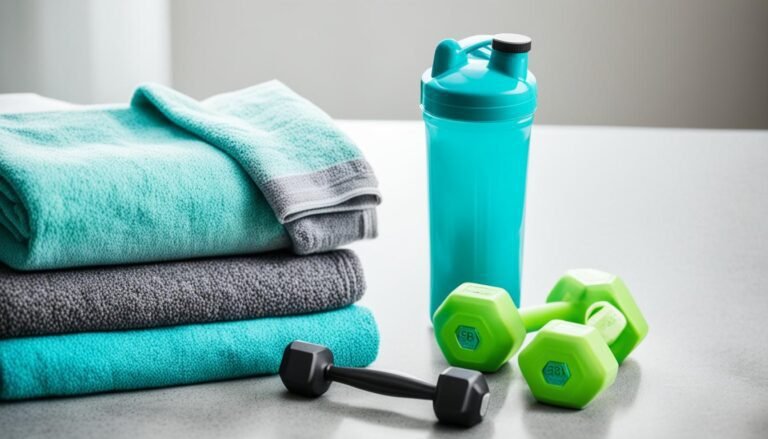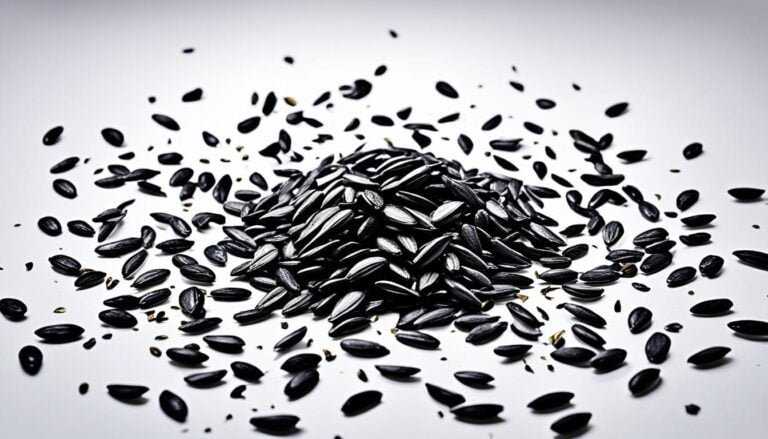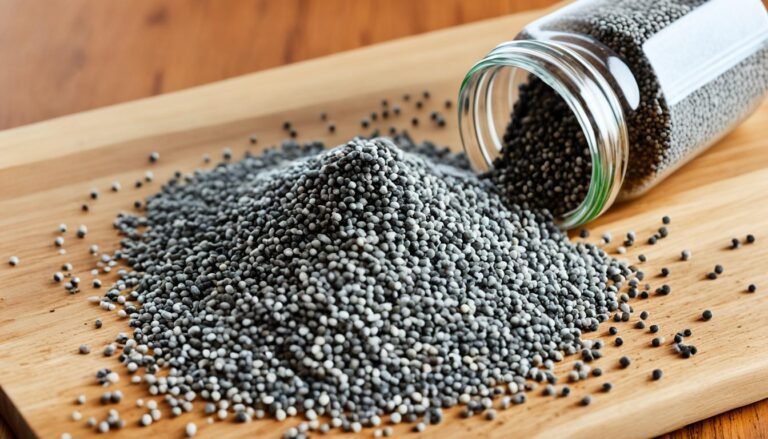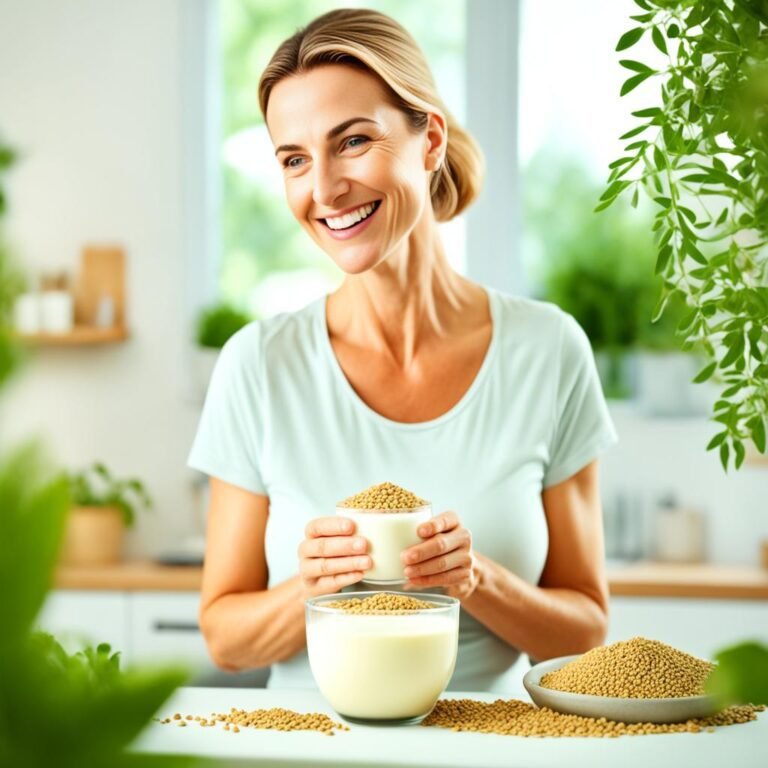Grow Delicious Carrots: Best Carrot Seeds Guide

Almost all carrot seeds can grow if you use a clever tip. This shows how amazing these veggies are. They’re great for people who enjoy gardening or are new to it. Learning to grow carrots well is very rewarding.
In this guide, we will cover how to pick the best carrot seeds, get the soil ready, and start the seeds right. Then, we’ll talk about taking care of the young plants and picking your carrots at the best time. After reading, you will know how to grow lots of tasty, colorful carrots. They will be a hit with your family and friends.
Why Growing Carrots is Worth the Effort
Growing your own carrots at home is a joyful experience. They taste better than any store-bought ones. Plus, you can find them in more colors than just orange.
Fresh, Sweet Flavor Unmatched by Store-Bought
Homegrown carrots taste amazing because they’re fresh. Their sweet crunch is unparalleled. These flavors are simply pure and delightful.
Vibrant Colors Beyond Just Orange
There are many carrot types to discover. You can find them in purple, yellow, and white. These colorful carrots make your food look and taste great. They’re an easy way to impress with your cooking.
Growing carrots brings joy whether you’re new or experienced. The unique flavors and colors will change your veggie view forever.
Choosing the Right Carrot Seeds
Choosing the right seeds for carrots is very important. Varieties like ‘Danvers’ and ‘Nantes’ are great choices. They have amazing taste and grow well. Gardeners have loved these heirloom carrots for ages. For a fun twist, try ‘Purple Haze’, ‘Cosmic Purple’, and ‘Dragon’. These carrot seed varieties offer unique colors and flavors. They are as easy to grow as the classic ones, adding beauty to your garden.
Classic Varieties Like ‘Danvers’ and ‘Nantes’
‘Danvers’ grows strong with a high success rate for sprouting. You can harvest it in just 70 days. ‘Scarlet Nantes’ is ready in 65 to 75 days. It’s tasty cooked or raw and comes in different shapes. Both these varieties are perfect for new and seasoned gardeners.
Unique Options: ‘Purple Haze’, ‘Cosmic Purple’, and ‘Dragon’
- ‘Purple Haze’ is a hybrid carrot with a beautiful purple outside. It’s ready to harvest in 73 days. It’s not just flavorful, it’s also a standout in the garden because of its color.
- ‘Cosmic Purple’ grows long and slender. It’s best to wait at least 70 days before harvest for the full-size roots. The wait is rewarding due to its amazing color.
- ‘Dragon’ has a hint of spice, matures in 85 days, and grows about 5 to 6 inches long. It adds variety to your kitchen.
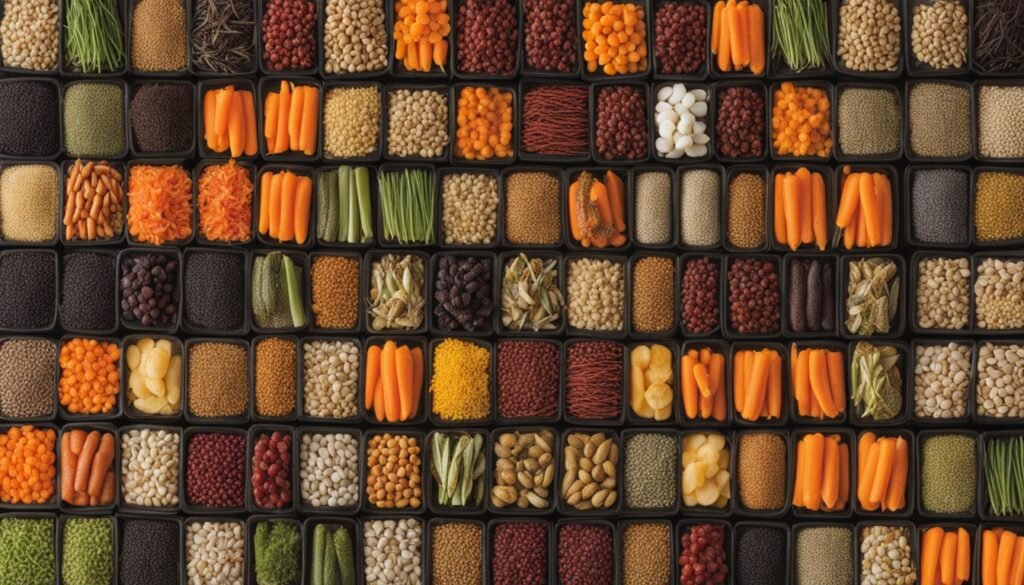
Opting for specialty carrot seed types can make your garden more exciting. It also brings a selection of flavors and colors to your table. With the right care, you’ll love the unique qualities of these heirloom carrots.
Preparing the Soil for Carrot Seeds
Start growing great carrots by preparing the soil. They like loose, well-drained soil, without rocks. Mix compost into the top 6 inches of your garden beds to create a perfect spot.
Aerate and prepare the soil using a broadfork or rototiller. This helps carrot roots grow easily. After making the soil loose, use a rake to make the surface smooth for planting seeds.
Plant carrot seeds at least half an inch deep, and space them out an inch within rows. Keep rows about a foot apart. This spacing helps carrots grow better and avoid problems like powdery mildew.
For even better soil, mix in organic matter like leaf litter or more compost. Aim for 2 to 4 inches of these materials. Also, feeding the bed with 2 to 4 cups of all-purpose fertilizer for every 100 feet can help.
Carrots like soil with a pH level between 5.8 and 6.5. Test your soil and adjust the pH if needed. With the soil set right, you’re set for a great carrot harvest.
| Soil Ingredient | Benefit |
|---|---|
| Sphagnum Peat Moss | Improves soil structure and water-holding capacity |
| Perlite | Enhances drainage and aeration |
| Vermiculite | Provides nutrients and retains moisture |
| Compost | Adds essential nutrients for plant growth |
The secret to growing tasty carrots is starting with well-prepared soil. With the right care, your garden can produce a lot of good carrots.
The Trick to Successful Carrot Seed Germination
Getting carrot seeds to sprout well is crucial for growing good carrots. These seeds need to have the soil moist all the time to start growing. You have to keep the soil damp for 5 to 21 days until the seeds sprout.
Covering the carrot seeds with a thin layer of compost or soil is a great tip. This layer locks in the moisture, stopping the seeds from drying out too fast.
Importance of Consistent Moisture
Carrots can be planted from early spring to mid-summer. You should plant them a few weeks before the last frost in spring. But, they won’t grow if it’s too hot, over 80 degrees. It’s also important that it’s not too cold, with a minimum of 40 degrees for good results.
Carrot seeds should get some moisture and not be buried too deep. If they don’t get enough darkness and moisture, they might not sprout well. Ensuring they stay moist evenly is key for success.
Covering Seeds with Compost for Better Retention
When planting, space the carrot seeds about an inch and a half apart. Putting a layer of compost helps keep the moisture in, stopping the seeds from drying before they sprout.
You can also get better results by pre-sprouting the seeds on a wet paper towel. Or sprinkle them over wet soil and lightly cover them with boards. This will improve the number of seeds that grow into carrots.
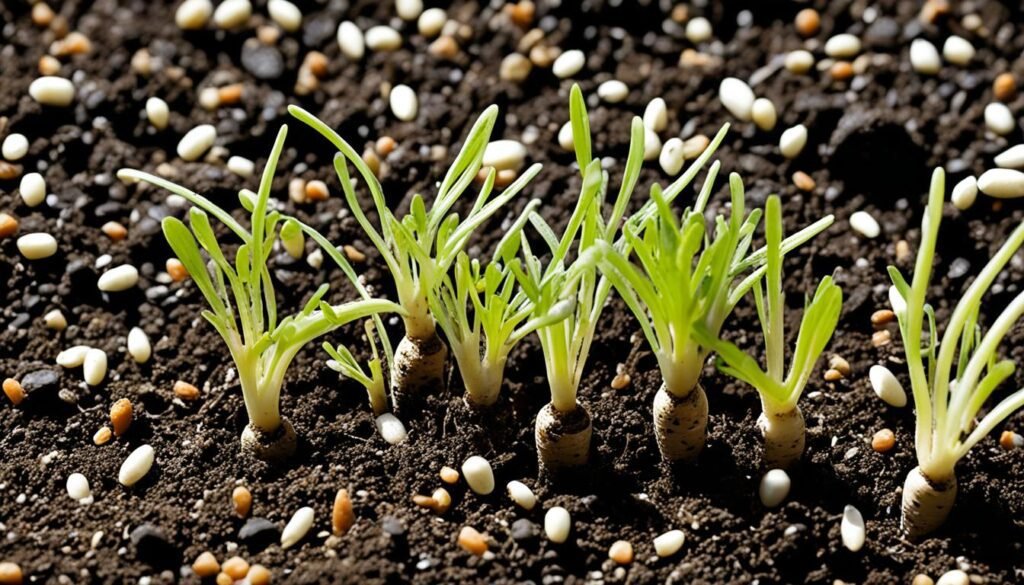
Using these tips to keep the soil moisture right and covering your seeds well is the secret to growing lots of carrots.
Thinning and Caring for Carrot Seedlings
When carrot seedlings start to grow, thin them to 2 to 4 inches apart. Proper spacing is vital. It lets each plant get enough food and sunlight without crowding others. This boosts the chance of growing big, straight carrots.
Be gentle when pulling out the extra seedlings. You don’t want to hurt the ones you’re keeping.
Proper Spacing for Maximum Yield
To enjoy homegrown carrots for longer, plant seeds every few weeks in spring and summer. When they’re 3 to 4 inches tall, thin them to an inch apart. A month after, thin them again to be one and a half to two inches from each other.
- Initial thinning: Thin seedlings to 1 inch apart when 3-4 inches tall.
- Second thinning: Thin again to 1.5-2 inches apart about a month later.
It’s possible to move carrot seedlings, but it might lead to odd-shaped carrots. For the best harvest, plant your seeds directly in the garden. Then thin them as they mature.
| Carrot Spacing | Planting Depth | Germination Time | Harvest Time |
|---|---|---|---|
| 2-4 inches between plants | 1/2 to 1 inch deep | 14-21 days | 70-100 days from seeding |
By following these carrot seedling care tips, you can expect a great carrot harvest this year. Proper thinning makes all the difference.
Pests and Diseases to Watch For
Carrots face many threats that reduce their growth and yield. These include carrot rust flies and carrot weevils. Also, leaf blight and bacterial soft rot can harm these vegetables.
Using Row Covers as a Preventative Measure
Protecting your carrots is key. You can do this by using floating row covers from germination. These physical barriers stop pest insects from damaging your plants. They also prevent the spread of diseases. Keeping the area weed-free and rotating crops can reduce issues.
The common pests and diseases for carrots are:
- Aster Yellows Disease – This disease is spread by the aster leafhopper and affects the plant’s leaves and roots.
- Carrot Rust – Eggs from carrot rust flies hatch in the soil, and the larvae damage the roots.
- Carrot Weevils – Their larvae feed on the upper part of the carrot root.
- Leaf Blight – This fungal disease causes leaves to have yellow and brown spots.
- Nematodes – Certain nematodes cause gall formations and malformed roots in carrots.
- Bacterial Soft Rot – A bacteria spread through the soil that rots and decays carrot roots.
After these diseases appear, organic control methods are limited. It’s best to focus on preventing them. Use row covers, rotate crops, and keep the garden clean. For other solutions, checking resources like the Cornell Plant Diseases website can be useful.
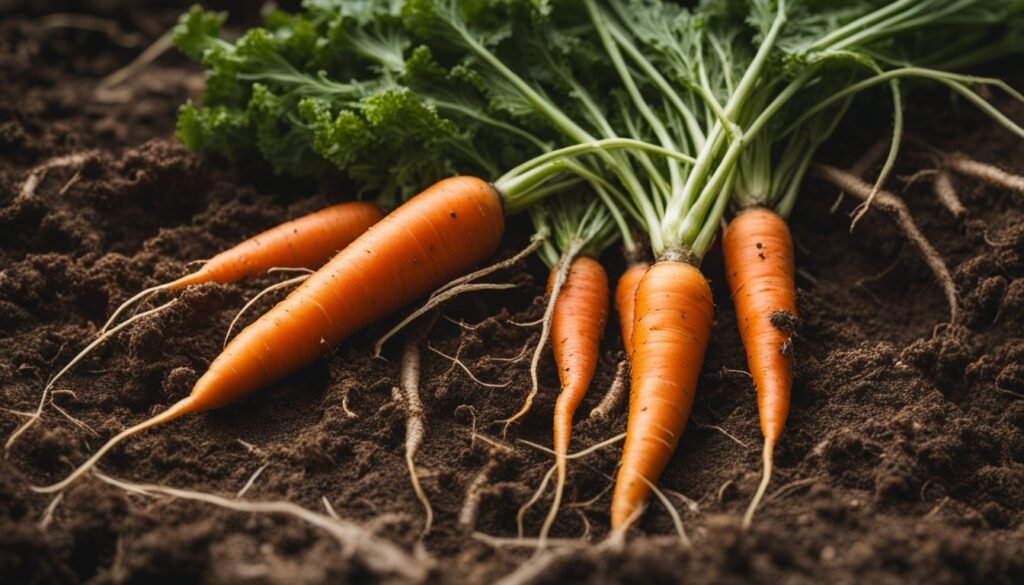
Carrot Seeds for Different Growing Seasons
To have carrots all year, plant them in both spring and fall. Choose the right carrot types and the right timing. This way, you’ll have tasty carrots more than once.
Want carrots in early summer? Plant spring carrots 2-3 weeks before your region’s last frost. Varieties like ‘Nantes’ and ‘Danvers’ grow fast. You’ll have a good harvest in warm weather. For fall carrots, plant about 10 weeks before the first frost. These carrots get sweeter in cooler weather.
| Carrot Variety | Sowing Season | Harvest Time | Flavor Profile |
|---|---|---|---|
| Nantes | Spring | 2-3 months | Sweet, tender |
| Danvers | Spring | 2-3 months | Robust, slightly spicy |
| Bolero F1 | Fall | 3-4 months | Crisp, sweet |
| Napoli F1 | Fall | 3-4 months | Tender, earthy |
Choose your carrot varieties wisely for both warm and cool seasons. Tailor your planting schedule to fit your area’s climate. This ensures a steady carrot supply all season long.
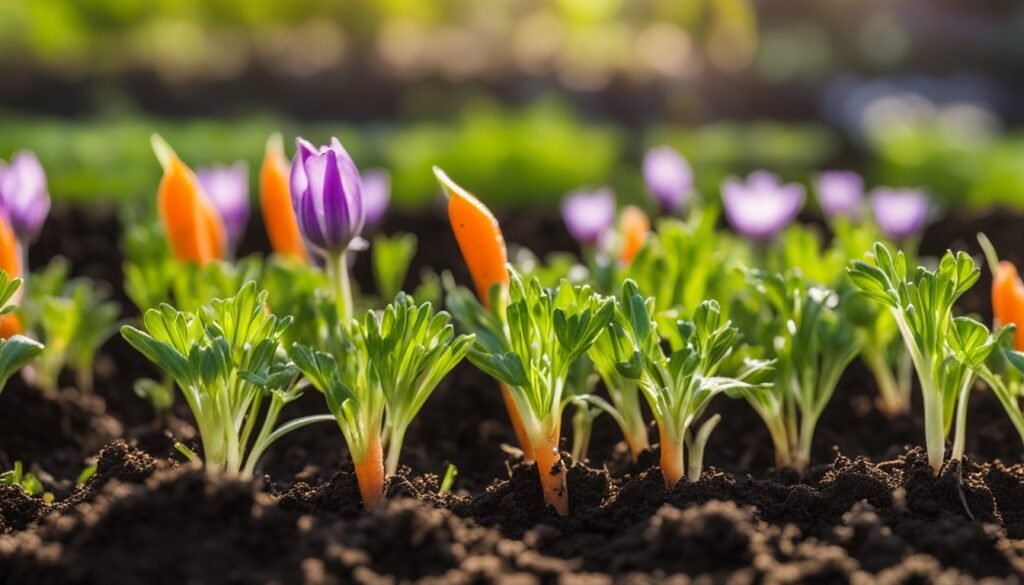
Harvesting Carrots at the Right Time
Knowing when to pick your carrots is key for the best taste and quality. Watch the carrot tops and root size. Carrots are prime for picking when their green tops start to droop and the top of the root is about 3/4 inch wide. You can also check by gently digging near the top of the carrot.
Carrots can get tough and lose their sweetness if left in the ground too long. It’s best to pick them when they’re ready, which is about 50-60 days for baby ones and 75 days for bigger ones since planting.
The good thing is, the seed packet’s guide is usually close to the true harvest time, about 10 days off, give or take. Keep a close watch as they grow, so you don’t pick them too early or too late.
After picking, cut off the carrot tops. Then rinse, dry, and store the roots. They can stay fresh in the fridge for 2-4 weeks or in a cool, sandy spot for even longer. This will keep your carrots tasting sweet and looking bright.
- Carrots are usually ready to harvest in 60-80 days, depending on type.
- Watch for flopping carrot tops and roots that are 3/4 inch wide at the top.
- Pick your harvest before the ground freezes to protect the roots.
- Cut off the tops and store the roots in a cool place for longer freshness.
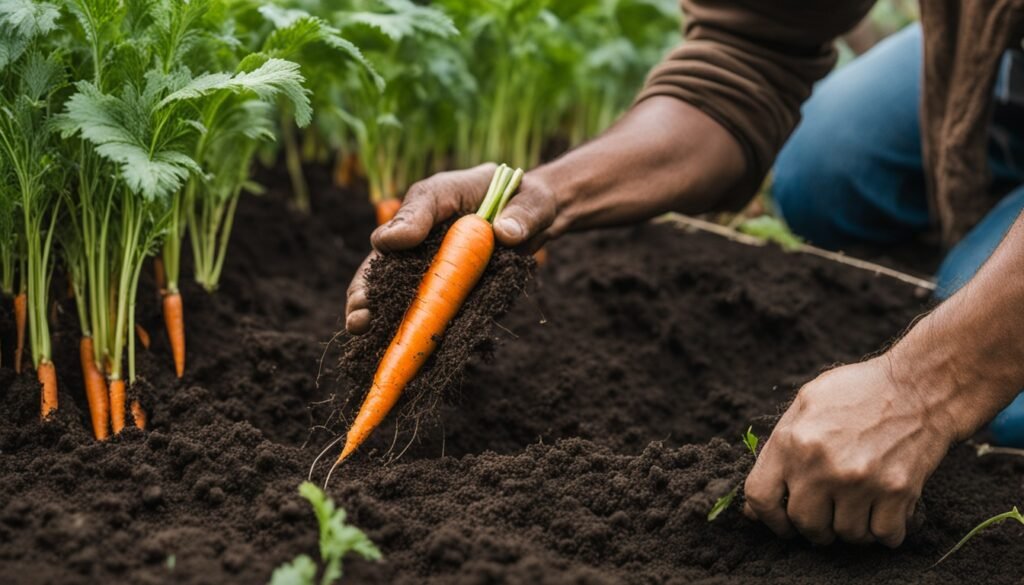
To know the best time to harvest, watch the tops and how big the roots are. This way, you’ll get the most from your carrots in taste and maturity. Also, remember you can eat the nutrient-packed carrot tops too!
Conclusion
Growing your own carrots is both fun and rewarding. This guide has shown you how to do it right. You’ll enjoy the amazing taste and colors of your homegrown carrots. You’ve learned everything from picking the best types to taking care of them and choosing the right time to harvest. Now, get ready to enjoy carrots you grew yourself.
This guide is great for both new and experienced gardeners. It gives you the tools to grow a great carrot garden. You can choose from many types, like Danvers and Nantes, or try unique ones like Purple Haze and Cosmic Purple. With the right soil, seeds, and care, you’re on your way to a big carrot harvest in no time.
By growing your own carrots, you get fresh and healthy food. Plus, you know exactly where it comes from. Enjoy the process and use this guide to help. Happy eating!
FAQ
What are the benefits of growing your own carrots?
Growing carrots at home gives you a taste you can’t find at the store. You can try different colors like purple, yellow, and white. These not only look interesting but also bring unique flavors to your dishes.
What are some reliable and unique carrot seed varieties to consider?
Consider the well-known types such as ‘Danvers’ and ‘Nantes’ for good taste and growth. For something different, try ‘Purple Haze’, ‘Cosmic Purple’, and ‘Dragon’. These seeds will make your garden stand out with their unique look and taste.
How do I prepare the soil for growing carrots?
To grow carrots, you need loose, well-drained soil without rocks or debris. Mix compost into the top 6 inches of your soil. Use a broadfork or rototiller to loosen it and make it ready for planting.
What is the key to successful carrot seed germination?
To help carrot seeds germinate well, keep the soil moist and steady for 5 to 21 days. Cover the seeds lightly with compost or soil to hold in moisture. This keeps the seeds from drying out too fast.
How do I care for carrot seedlings?
When they sprout, thin the carrot seedlings so they’re 2 to 4 inches apart. This helps them grow better since each plant gets enough space and resources. This step is important for a good carrot harvest.
What pests and diseases should I watch out for when growing carrots?
A few common threats to your carrots are carrot rust flies, carrot weevils, and some bugs and diseases. Cover your carrot plants with floating row covers to protect them from these pests. Do this from the start to form a barrier against harmful bugs.
When is the best time to plant and harvest carrots?
You can plant carrots for spring or fall harvests, depending on your area. For a summer crop, plant them a couple weeks before the last spring freeze. For fall, plant 10 weeks before the first fall freeze. Fall carrots can be especially sweet after a light frost.


